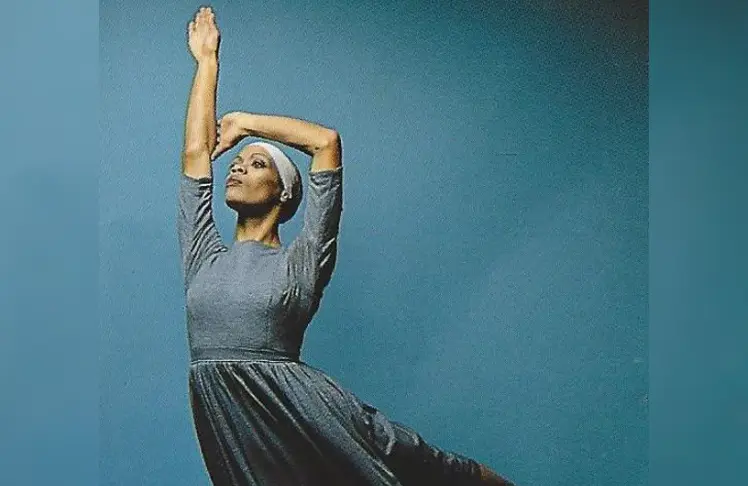
This post was originally published on Afro
By Jannette J. Witmyer
Early on in her childhood, Anne Benna Sims, the first African-American ballerina to sign a contract with the American Ballet Theatre (ABT), wanted to take lessons in dance, but she had to wait a few years before she was allowed to start.
“My mother said that I could not,” said Sims. “I was five. She said that I couldn’t start until I was nine because my bones needed to be finished.”
According to Sims, once she was enrolled in classes at the Long Island Institute of Music in Queens, N.Y., she progressed quickly.
“My very first class was basically just running, jumping, hopping and listening to the music,” said Sims.
“Then I advanced into my beginning classes and moved right into first position, second position and all of that,” she shared, referencing beginner ballet technique.
Those classes served as the launchpad to her ongoing education in dance. Sims also had an interest in religious work and after a passing fascination with the habits and rosaries worn by the nuns at her Catholic school sparked a brief interest in becoming a nun, by age 13. However eventually her intuition led her to choose a career as a ballerina. Ironically, by the time she was 14, she had begun taking classes with the American Ballet Theatre School.
Growing up in New York allowed for access to a bounty of performances by what was considered “dance royalty.” She recalls being taken to see the Nutcracker with Suzanne Farrell, before she was 10; seeing “Firebird” with Maria Tallchief, “Prodigal Son” with Patricia Wilde, New York City Ballet, and Arthur Mitchell; and attending a Saturday youth program at Queens College, where she saw “Carmen de Lavallade,” “Martha Graham,” “Alwin Nikolais,” and many others.
“My mom, God bless her soul, was very focused. And she knew I loved dance and wanted to be a ballet dancer,” said Sims. “So, by the time I was 16, I had seen all of these incredible dancers and companies. I saw and was exposed to everything, but I wanted to do ballet. That was it.”
Sims’ mother may have been responsible for most of her exposure, but when she was 13, her sister purchased tickets for them to see a Royal Ballet performance, in which her idols, Rudolf Nureyev and Margot Fonteyn, danced in “Giselle.” For her, the experience was a defining moment, which she describes, still somewhat in awe.
“At the beginning of the second act, he was dressed all in black. The doublet had slashes of white, and he wore white tights and white shoes, with this huge black cape and a bouquet of white lilies. And all he did was just walk diagonally across the stage,” she shared. “And then he walked straight across and just went off. It was the first time that I understood artistry. In that one little bit, he just radiated this sorrow, and this grief and regret… And all he did was walk. It was so beautiful.”
Sims says that she was excited to enter an apprenticeship with Harkness Ballet once she graduated high school. But after studying with the company for a year, following her audition, she was told that hers was a fruitless pursuit.
“David Howard, who was the director at the time, called me into his office and said, ‘Well, you know, Anne… You will never get a job in this company. You’ll either have to go to Dance Theatre of Harlem, or Europe.’”
Sims says she went to the dressing room after that meeting and realized for the first time, while looking in the mirror, that she was the only Black dancer in the room.
She refused to be deterred, and when the opportunity arose, she auditioned for Les Grands Ballets Canadiens in Montréal and was accepted. She stayed with the company for a year and, at 19, traveled to Switzerland and joined the Geneva Opera Ballet at the invitation of the company director, Alfonso Catá. He became her mentor and invited her to join the Frankfurt Opera Ballet as a soloist, when he became its director. In 1977, she returned to the U.S.
“A group of us left in 1977. When we had come back, I worked with Eglevsky and the Puerto Rican Dance Theatre,” she mentioned. “Alfonso did ballet on Broadway, and the thing that was so amazing was that I turned down Alvin Ailey and had no idea where I was going.”
Then, as fate would have it, she joined a friend taking classes at ABT who had hopes of getting in, but, instead, she was the one offered a contract.
“It was my friend, Diane, who wanted to get into American Ballet Theatre. I started taking classes with her because I knew I was never going to get into Ballet Theatre, and it wasn’t really high on my list. In fact, it wasn’t on my list, at all,” she says, laughing. “And she was more excited than me. I was just going ‘I’m so sorry. I’m so sorry. I’m sorry.’”
Notably, Sims’ first principal role with ABT was in Anthony Tudor’s Undertow with Peter Fonseca, and she was a member of its first cast for the New York premiere of Paul Taylor’s Airs.
The accomplished, former danseuse, who now lives in France, says that she’s not danced in over 40 years and has never been phased by the notion of being “the first Black.”
“One thing has always stuck in my mind; ‘Black ballerina’ is not a profession. It is a description. Therefore, I was a ballerina. I was a Black woman dancing ballet,” she explained.
“For me, the most important thing is my predecessors, as Black women in dance. So, it’s not a question of ballet. It’s a question of the spectrum. My history goes back to Katherine Dunham, who introduced Afro Cuban dance to America. It goes back to Josephine Baker, who was a star at the Moulin Rouge.”















